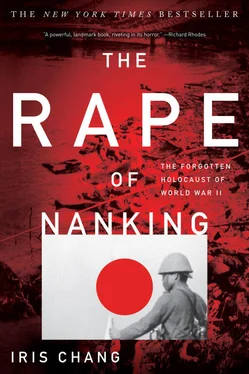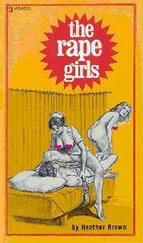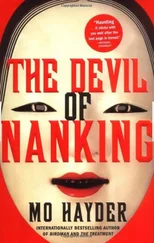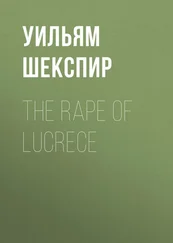At the same time the Japanese hosted glamorous receptions and media events in Nanking and Shanghai to divert attention away from the atrocities. In early February a Japanese general invited foreign diplomatic representatives to a tea at the Japanese embassy in Nanking. He boasted that the Japanese army was world-renowned for its discipline, and that not a single violation against discipline had occurred during the Russo-Japanese War and Manchurian campaign. The general said that if for some reason the Japanese had committed outrages in Nanking, it was only because the Chinese people had resisted them under the instigation of foreign nationals, meaning, of course, the International Safety Zone Committee. But oddly enough, in the same speech the general contradicted his previous statements by admitting that Japanese soldiers had vented their anger upon the population because they had found nothing edible or usable during their advance on Nanking.
The Japanese media circus, however, failed to fool the foreign diplomatic community about the arson, rape, and murder that raged through Nanking. In mid-February the Japanese held a military concert in Shanghai, complete with geishas and press photographers. A German diplomat observed, however, that while the gala affair was taking place, “a mother of an 11-year-old girl who did not want to release the young girl to rape by the soldiers was burnt down with her house.”
THE SAFETY ZONE LEADERS FIGHT BACK
The International Safety Zone Committee did all it could to fight the barrage of propaganda. During the first few days of the massacre the zone leaders enlisted the aid of American foreign correspondents like Frank Tillman Durdin, Archibald Steele, and C. Yates McDaniel. But after their departure, the International Committee was left to its own devices. The Japanese government barred other reporters, like Max Coppening of the Chicago Tribune, from entering Nanking, and the behavior of the Japanese soldiers grew worse when they realized that their actions would not be observed by the world media.
But the Japanese government underestimated the ability of the International Committee to wage its own publicity campaign. One distinguishing trait that united the zone leaders was their superior training in the verbal arts. Almost without exception, they were eloquent writers and speakers. The missionaries, educated at the best universities in America and Europe, had devoted most of their adult years to delivering sermons, writing papers, and working the Christian lecture circuit; some of the professors on the committee had written books. Moreover, as a group they were sophisticated about working with the media; long before the fall of Nanking they had enjoyed broadcasting speeches over Nanking radio or penning articles about China for the popular press. Finally, the missionaries had an additional advantage the Japanese did not foresee: they had spent their entire lives contemplating the true meaning of hell. Having found one in Nanking, they wasted no time in describing it for the world public. Their hard, cogent prose recaptured the terror that they witnessed:
Complete anarchy has reigned for ten days—it has been hell on earth… to have to stand by while even the very poor are having their last possession taken from them—their last coin, their last bit of bedding (and it is freezing weather), the poor ricksha man his ricksha; while thousands of disarmed soldiers who had sought sanctuary with you together with many hundreds of innocent civilians are taken out before your eyes to be shot or used for bayonet practice and you have to listen to the sounds of the guns that are killing them; while a thousand women kneel before you crying hysterically, begging you to save them from the beasts who are preying on them; to stand by and do nothing while your flag is taken down and insulted, not once but a dozen times, and your home is being looted, and then to watch the city you have come to love and the institution to which you have planned to devote your best deliberately and systematically burned by fire—this is a hell I had never before envisaged. (George Fitch, December 24, 1937)
It is a horrible story to try to relate; I know not where to begin nor to end. Never have I heard or read of such brutality. Rape! Rape! We estimate that at least 1,000 cases at night and many by day. In case of resistance or anything that seems like disapproval there is a bayonet stab or bullet. We could write up hundreds of cases a day; people are hysterical; they get down on their knees and “kutow” any time we foreigners appear; they beg for aid. Those who are suspected of being soldiers, as well as others, have been led outside the city and shot down by the hundreds—yes, thousands…. Even the poor refugees in certain centers have been robbed again and again until the last cent, almost the last garment and last piece of bedding…. Women are being carried off every morning, afternoon and evening. (John McCallum, December 19, 1937)
I think I have said enough of these horrible cases—there are hundreds of thousands of them. Being so many of them finally makes the mind dulled so that you almost cease to be shocked anymore. I did not imagine that such cruel people existed in the modern world…. It would seem that only a rare insane person like Jack the Ripper would act so. (John Gillespie Magee, January 28, 1938)
The graphic details of Japanese excesses appeared not only in Safety Zone diaries but in letters and newsletters that were mimeographed or retyped over and over again so that friends, relatives, government officials, and the press could all receive copies. When mailing descriptions of the massacre, the zone leaders often begged the recipients not to disclose authorship of the documents if they were published, for fear that individual committee members would face retribution or expulsion from Nanking. “Please be very careful of this letter as we might all be kicked out if it were published, and that would be a disaster for the Chinese of Nanking,” Magee wrote to his family. The Japanese, he explained, would allow the foreigners to leave, “with the greatest pleasure,” but would not allow anyone to return.
In the end the persistence, hard work, and caution of the zone leaders paid off. George Fitch’s diary was the first one to be leaked out of Nanking, and it created a “sensation” in Shanghai. His stories and others (often with key names deleted) swiftly found their way into mainstream print outlets like Time, Reader’s Digest, and Far Eastern magazine, evoking widespread outrage among American readers. Some eventually reemerged in books, such as in the Manchester Guardian reporter Harold John Timperley’s Japanese Terror in China (1938) and Hsu Shuhsi’s Documents of the Nanking Safety Zone (1939).
To brace their readers, the zone leaders sometimes prefaced their documents with warnings. “What I am about to relate is anything but a pleasant story; in fact, it is so very unpleasant that I cannot recommend anyone without a strong stomach to read it,” Fitch wrote in his diary before publication. “For it is a story of such crime and horror as to be almost unbelievable, the story of the depredations of a horde of degraded criminals of incredible bestiality, on a peaceful, kindly, law-abiding people… . I believe it has no parallel in modern history.”
True to their predictions, the reports from the International Safety Zone Committee aroused skepticism from the American public. When the article “The Sack of Nanking” appeared in Reader’s Digest, one subscriber wrote: “It is unbelievable that credence could be given a thing which is so obviously rank propaganda and so reminiscent of the stuff fed the public during the late war.” Similar comments came from other subscribers. But the editors at Reader’s Digest insisted that the stories were true. To defend their credibility, the editors took “considerable pains” to collect more letters from the Safety Zone leaders, which they reprinted in the October 1938 issue of the magazine. “The material we have seen,” the editors hastened to add, “would fill an entire issue of this magazine, all of it corroborating the typical extracts which follow.”
Читать дальше











